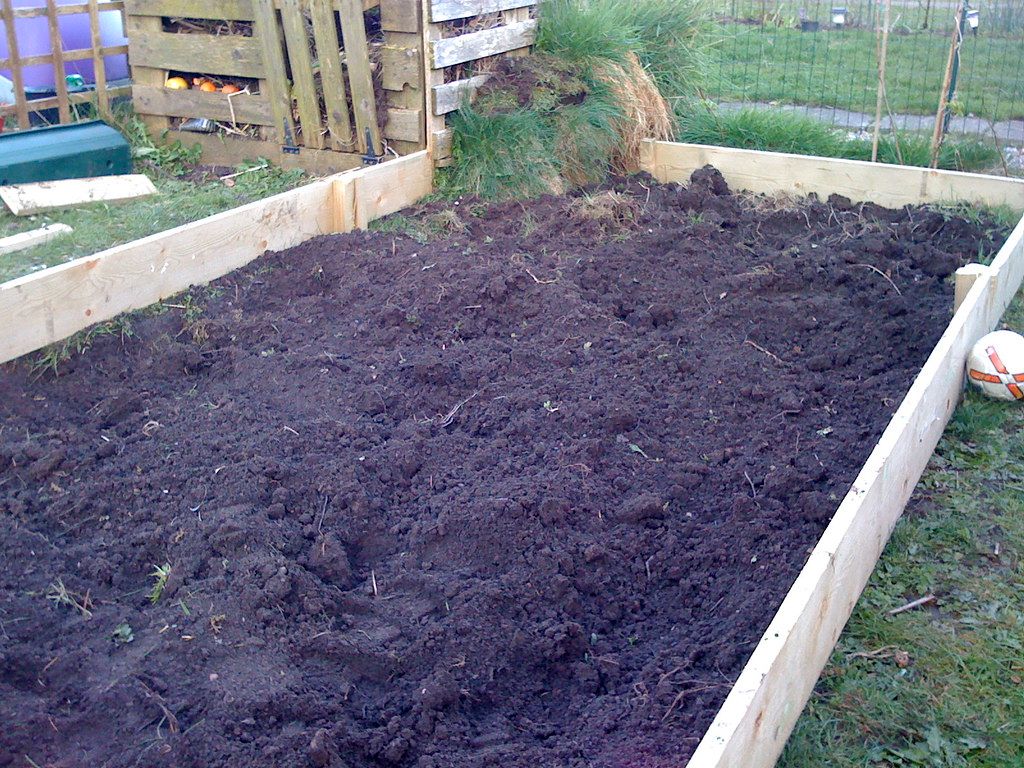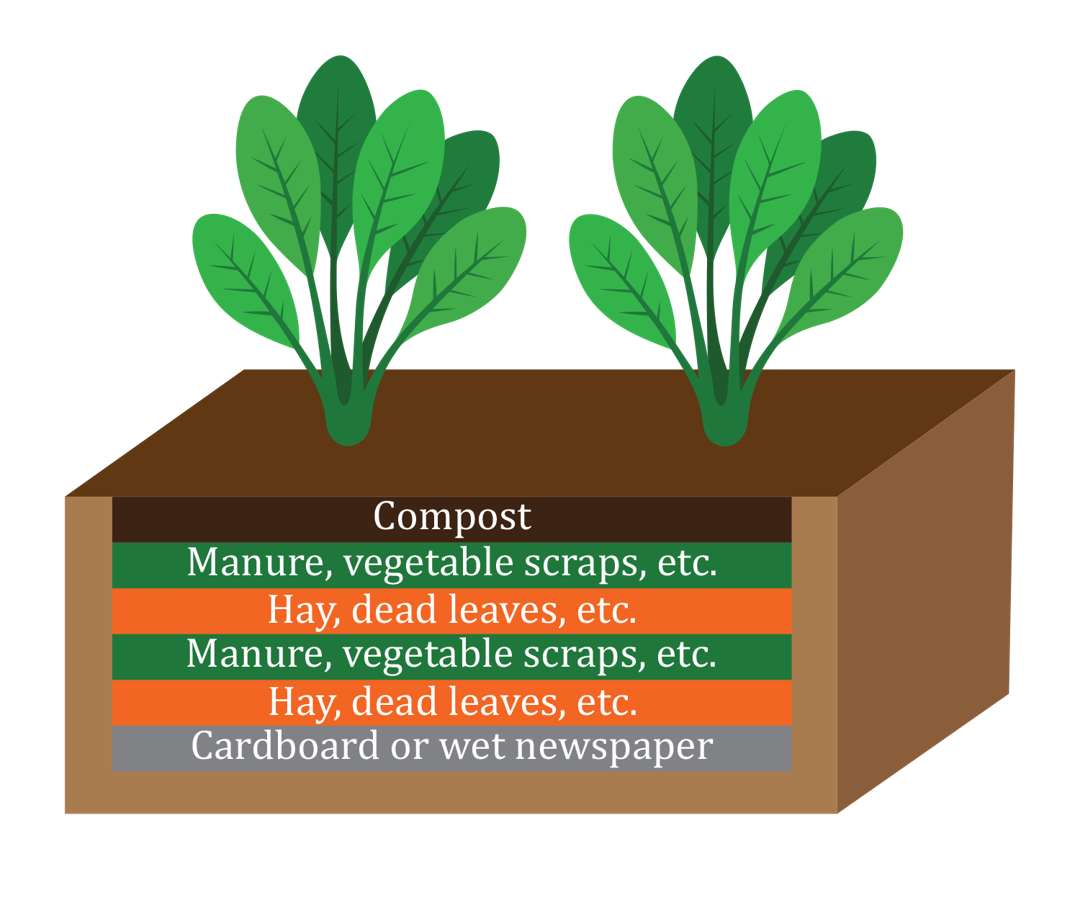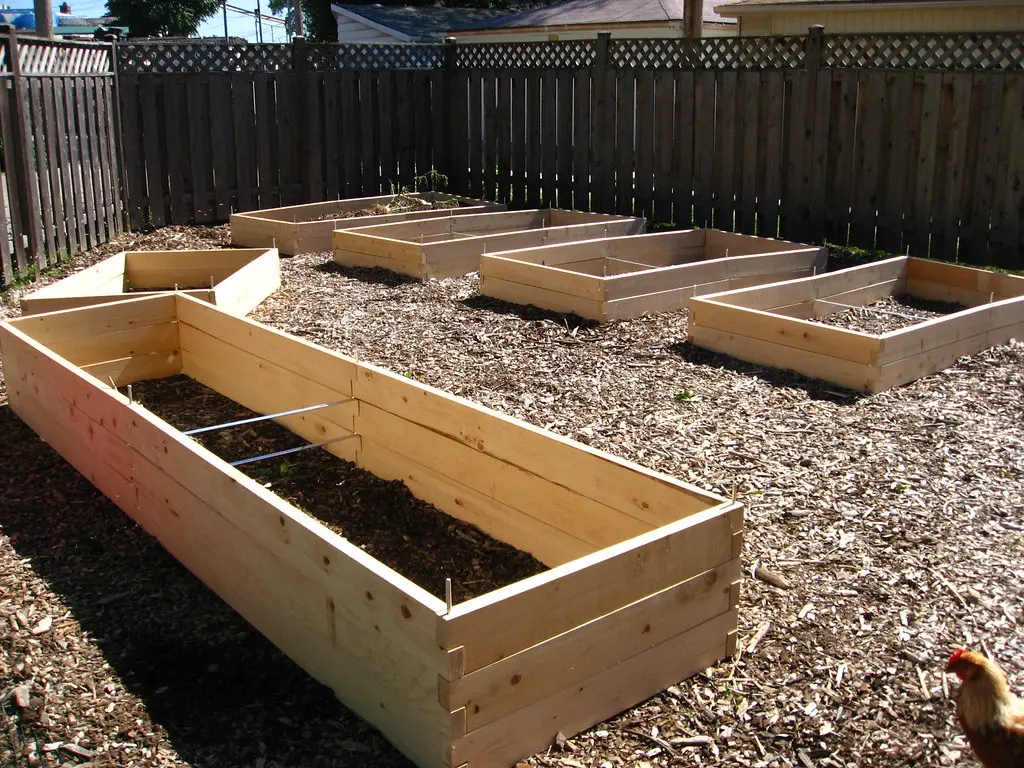Square foot gardening often takes place in raised beds. These can be pre-purchased or constructed by the gardener. While constructing the beds is fairly straightforward, figuring out what exactly to put in the beds can be a little more complicated. One of the advantages of raised bed gardening is that you are not limited by the soil on your property, which can sometimes be less than ideal for certain crops. While you can buy pre-mixed bags of soil that are specifically made for raised bed gardening, this can get very pricey if you have a lot of ground to cover. There are more efficient ways to fill in your raised beds, either by manually mixing several different soil components, or by a method deemed ‘lasagna gardening.’

To create your own soil mix, you can bulk buy and combine three different materials: topsoil, compost, and potting soil. The recommended ratios are 60% topsoil, 30% compost, and 10% potting soil. In other words, for every 6 bags of topsoil, you should buy 3 bags of compost and 1 bag of potting soil; assuming the bags are about the same size. Depending on the size of your raised beds, you may want to work with smaller amounts of soil at one time. I usually use an empty coffee jar to scoop my portions of soil. After placing 6 scoops of topsoil, 3 scoops of compost, and 1 scoop of potting soil, I use a handheld cultivator to mix the materials together. The mixing can be done right in the raised bed, or in a 5-gallon bucket, which is then poured into the bed. I continue this method until the raised bed is full. Thankfully, this process only needs to be done once.
Another method which is both efficient and economical is called ‘lasagna gardening.’ As the name suggests, this method involves layering different types of organic matter. Lasagna gardening is more economical than the previous method, because you likely have most of the materials at home! If you are creating a lasagna garden, it is best to start many months before you actually intend on planting things, as the materials should be given some time to intermingle and disintegrate. The first ‘layer’ of a lasagna garden is a thick stack of either wet newspaper or cardboard. The purpose of this layer is to prevent any grass or weeds, which may still exist underneath, from entering the raised bed. After that layer is placed, you will go back and forth between creating layers of orange organic matter and green organic matter (see diagram below).

The orange layer should be made up of dry materials- hay, dead leaves, and even small twigs are ideal. It is best to have an orange layer directly above your newspaper/cardboard layer to ensure good drainage. The green organic matter should consist of plant material such as veggie scraps, coffee grounds, and lawn clippings. This layer also often contains manure. Do not place any meat scraps into these layers, as this will attract rodents. Alternate between orange and green layers, each a few inches thick. Once you reach the top of your raised bed, add a few inches of compost to the very top. Thoroughly water your filled raised bed and allow the organic matter to decompose over several months before planting.
Either one of these two methods is a surefire way to deliver the required nutrients to your plants, allowing them to grow abundantly. They are both economical and easy for beginners. For further help with planning your garden, be sure to download the Planter app.
